Top 5 Ways to Get the Most Out of Energy Efficiency
These benefits and more are worth celebrating on this week’s fifth annual Energy Efficiency Day, especially at time when America faces so many challenges.
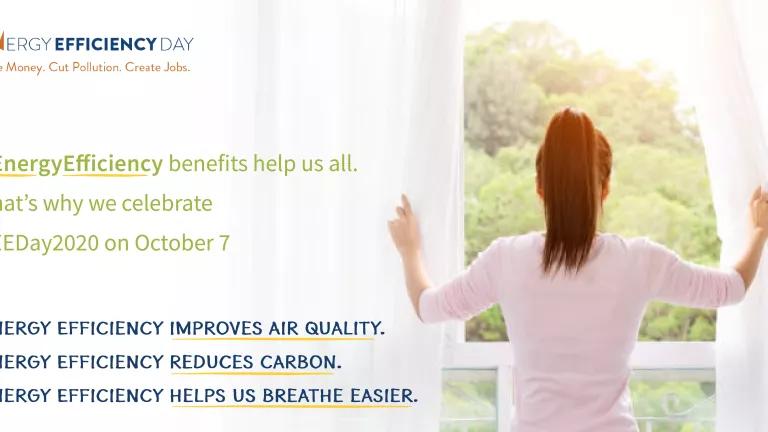
It’s no secret that energy efficiency offers substantial benefits and is the cheapest way to cut energy waste and stave off the climate crisis. It provides people with much-needed energy bill relief, helps us breathe better, keeps our electricity system affordable and reliable, and provides good job opportunities. These benefits and more are worth celebrating on this week’s fifth annual Energy Efficiency Day, especially at time when America faces so many challenges. Fortunately, efficiency can help with some of them, as well.
Many aspects of our world seem to be in chaos as seen by ongoing racial injustices, major wildfires and hurricanes, and threats to our nation’s democracy. It’s hard to focus on solutions, but that’s exactly what we need to do. While we must collectively combat racist systems and build our economy back equitably, we also have an opportunity to step up efficiency to provide more immediate support to those who need it the most.
With smart and equitable policies, efficiency can continue to be our planet’s superhero, improving our health, creating high-quality jobs, and making our energy bills more affordable (for renters this leaves more money for necessities like food; for cities, more funding for things like fire stations). In fact, investing in efficiency since 1980 has helped consumers save almost $800 billion per year in energy costs and reduced the amount of emissions spewing into the air by 60 percent.
While efficiency alone will not solve our racial, economic, and health crises, it can be part of the solution. Here are the top five ways that decision makers at the local, state, and federal levels can equitably scale up efficiency to do more.
1. Put People at the Center When Designing Efficiency Policies and Programs
When designing policies and programs, decision makers should think about how their choices will best work for people. It is particularly important to account for systemic inequalities that have led to underinvestment in Black, Latino and other communities of color as seen through policies such as redlining. Neighborhoods that were the targets of such policies are also hotter and residents tend to have lower incomes and lack access to critical resources like health care. This makes it harder for them to stay healthy, safe, and comfortable during climate- or health- related crises.
Efficiency can help, but it’s not just about programs to help cool homes or cut energy bills. It’s also about allocating funding in a way that is reflective of relative need and sufficient to provide quality upgrades for everyone who is willing and eligible while ensuring renter protections.
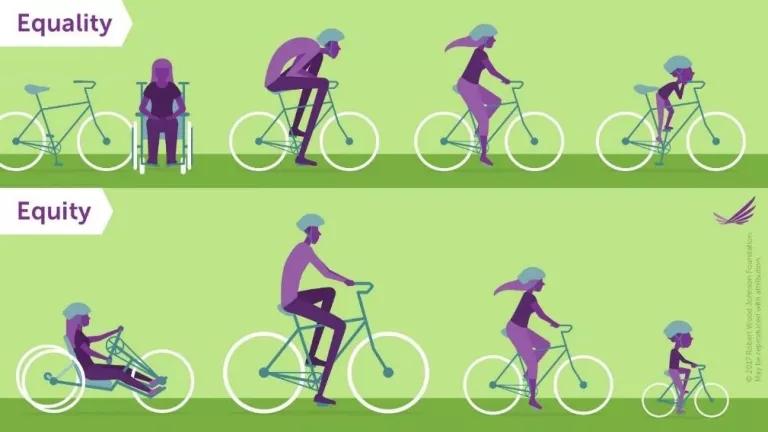
To make sure that people are centered in decisions that impact them, utility commissions must increase opportunities to hear a diverse array of voices. This can be done by holding public meetings in community halls across their jurisdiction, at various times of the day, and by offering a simplified way to voice public opinions on the record. Commissions could also hold focus groups on proposals and meaningfully compensate people for their time. This will help ensure the decision-making process includes input from more people.
2. Properly Value Efficiency to Reap Its Benefits
Efficiency is a great money saver. Helping people cut energy waste is cheaper than providing energy to power their gadgets and heat their homes. What’s more, highly efficient buildings and appliances cut energy bills, which reduces energy burdens and lowers the risk of utility shut-offs. This is critical as one in five U.S. households foregoes necessities like medicine to pay energy bills.
Efficiency is also a critical partner to deploying renewable energy like solar panels or for efforts to cut emissions from buildings by installing efficient electric heat pumps instead of gas-powered systems. With efficiency, investments in renewable energy stretch farther plus the stresses on the grid can be reduced. Heat pumps also work better when operating in a well-weatherized home.
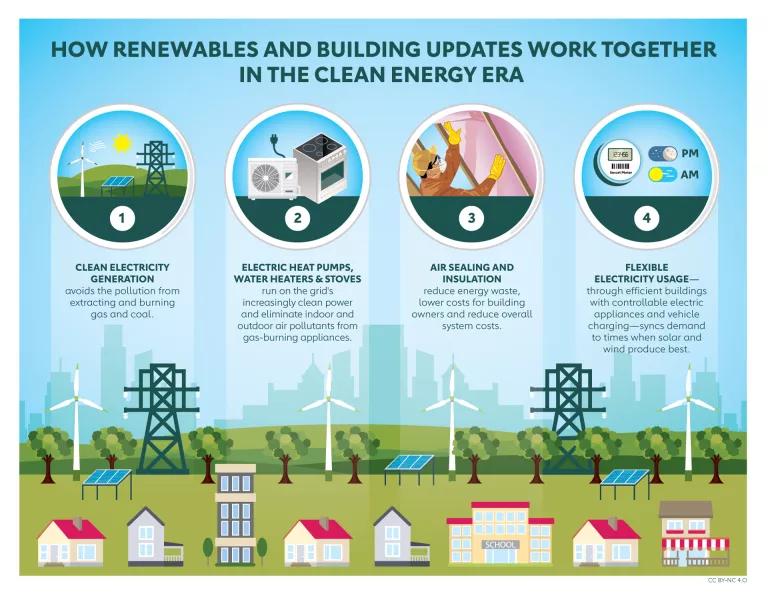
But fully tapping into efficiency is only possible when decision makers set rules that count efficiency’s many benefits and find other funding opportunities that will help reach even more people. For example, when efficiency reduces the need for utilities to buy or build fossil-fuel power plants, energy costs go down for everyone. If people use less energy, power plants run less, cutting pollution responsible for unhealthy outdoor air that disproportionately affects communities of color and seeps indoors due to poorly weatherized homes. Efficiency also can keep people cooler inside their homes, which lowers the risk of heat-related illnesses, and efficiency improvements remove conditions for mold that can lead to respiratory ailments.
3. Provide Pathways to Economic Opportunities
Efficiency provides millions of jobs that can’t be outsourced. With the right policies, these can be high-quality, family-sustaining positions with health care and other benefits—as well as ongoing training and a career path. It’s important to ensure these jobs are accessible to those with greater employment barriers (such as language, criminal record, or lack of transportation). Decision makers can support partnerships between local community organizations and employers to support pathways to efficiency careers.
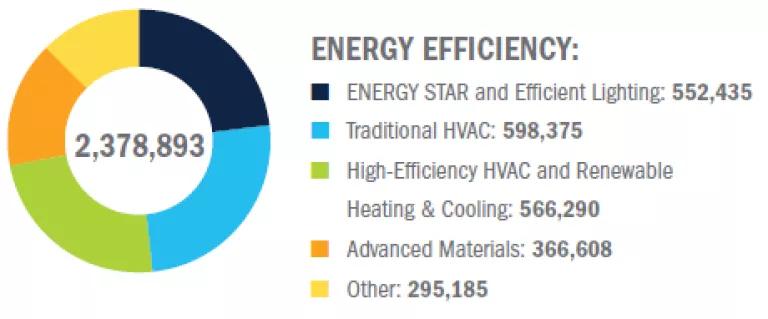
E2 Clean Jobs America 2020 – Q4 2019 Data
In addition, diverse businesses and non-profits best suited to serve their communities often struggle to participate in complicated bidding processes for efficiency contracts. Regulators and councils can establish diverse supplier policies to require or incentivize their participation and provide help navigating bid processes.
4. Make Electricity Cheaper and More Reliable
Using less energy means utilities don’t need to buy as much power and can avoid upgrading substations and transformers, lowering bills for all customers. Smarter energy use also reduces stress on the electric grid, avoiding blackouts and ensuring power system reliability and security, especially during extreme temperatures.

Utility commissions can set clear rules that prioritize targeting efficiency programs at certain locations or times of day (like when the sun is not shining or the wind isn’t blowing). Targeted programs improve quality of life and cut customer energy burdens, but it’s also important to invest in cutting electricity consumption across the entire territory—including wealthier customers that tend to use the most energy—to lower the overall cost of providing electricity.
5. Invest in Efficiency to stave off the Climate Crisis
All of these opportunities to scale up efficiency will ultimately help battle the climate crisis. By investing in programs that cut energy use and lower dangerous pollution from fossil-fueled power plants, efficiency can help slow climate change that contributes to public health emergencies. This reduces the risk of climate disasters, which have an outsized impact on low-income people and communities of color.
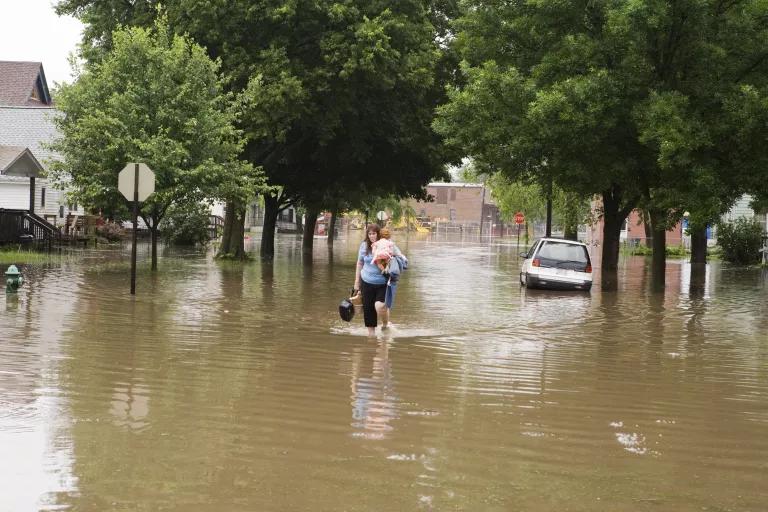
Combating the climate emergency may seem insurmountable. But efficiency can get us halfway to the carbon emission cuts we need while relying on current technologies that are affordable. Even replacing one light bulb with a high-efficiency LED model or closing the shades during a sunny day to cool your home can help. There are also energy-efficient ways to stay warm as winter approaches.
By focusing on these five key aspects of efficiency, decision makers can prioritize the most affordable way to keep our lights on, ensure everyone has access to quality efficiency programs, and improve quality of life—all while helping to protect the planet.



